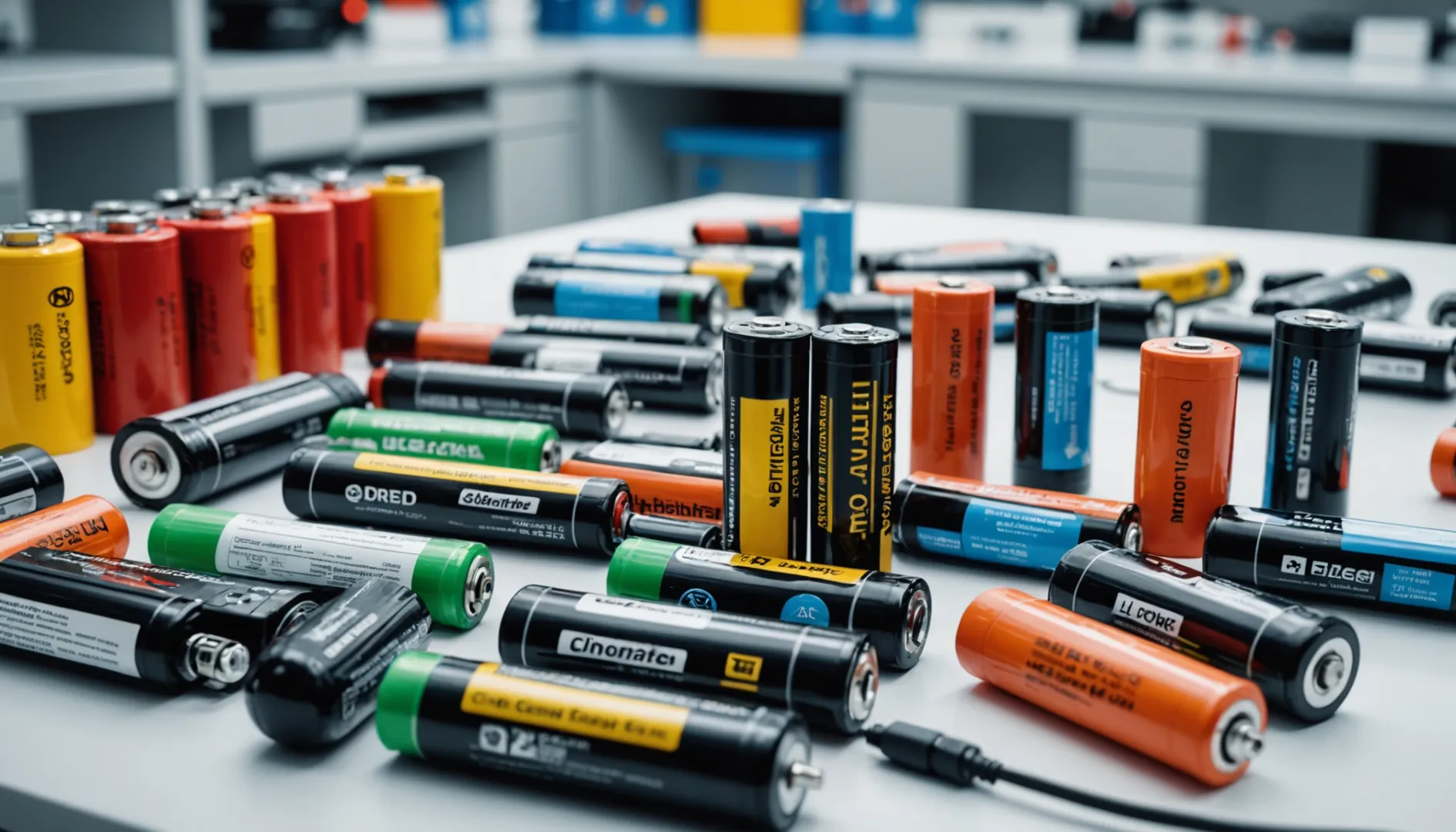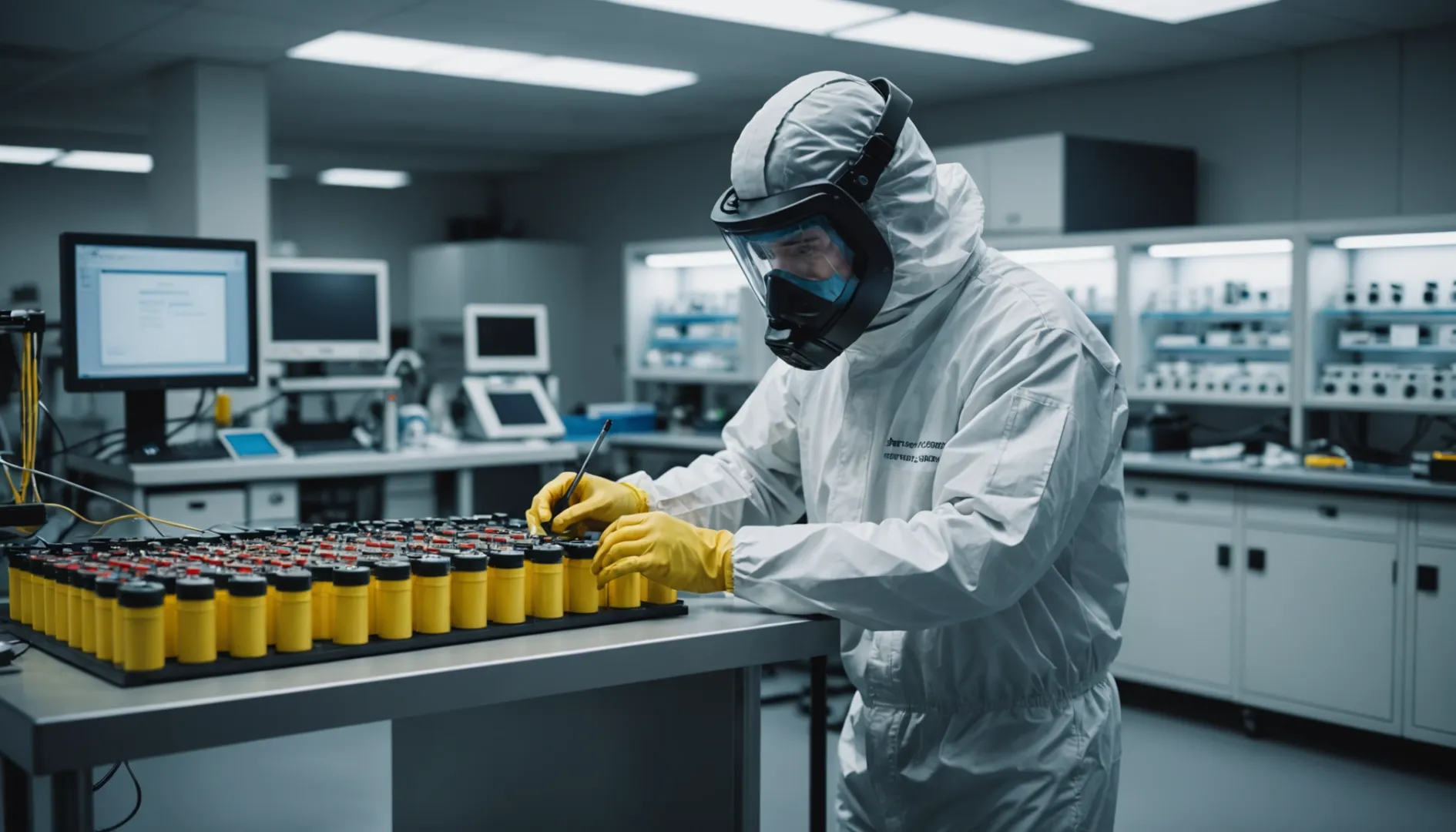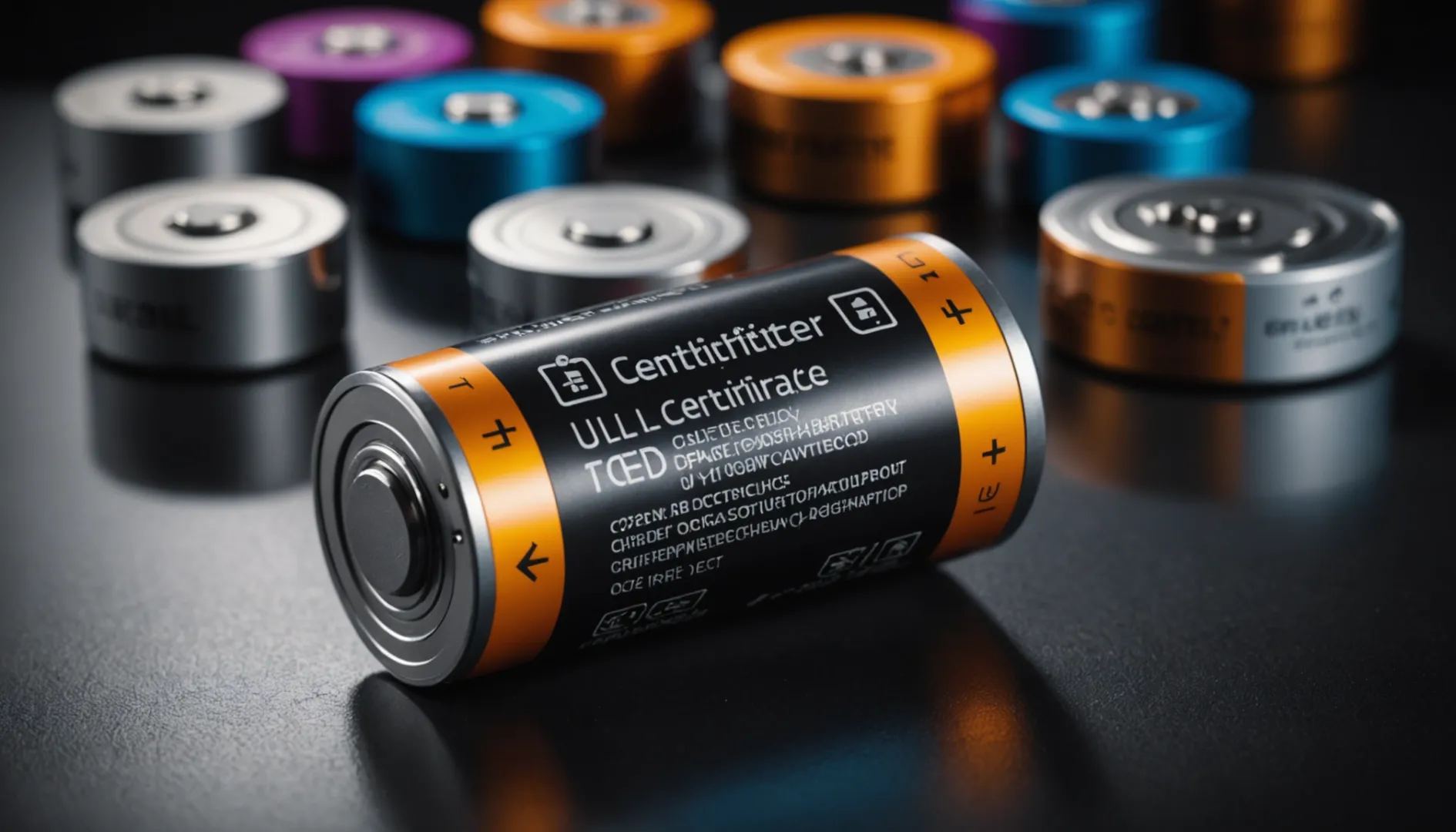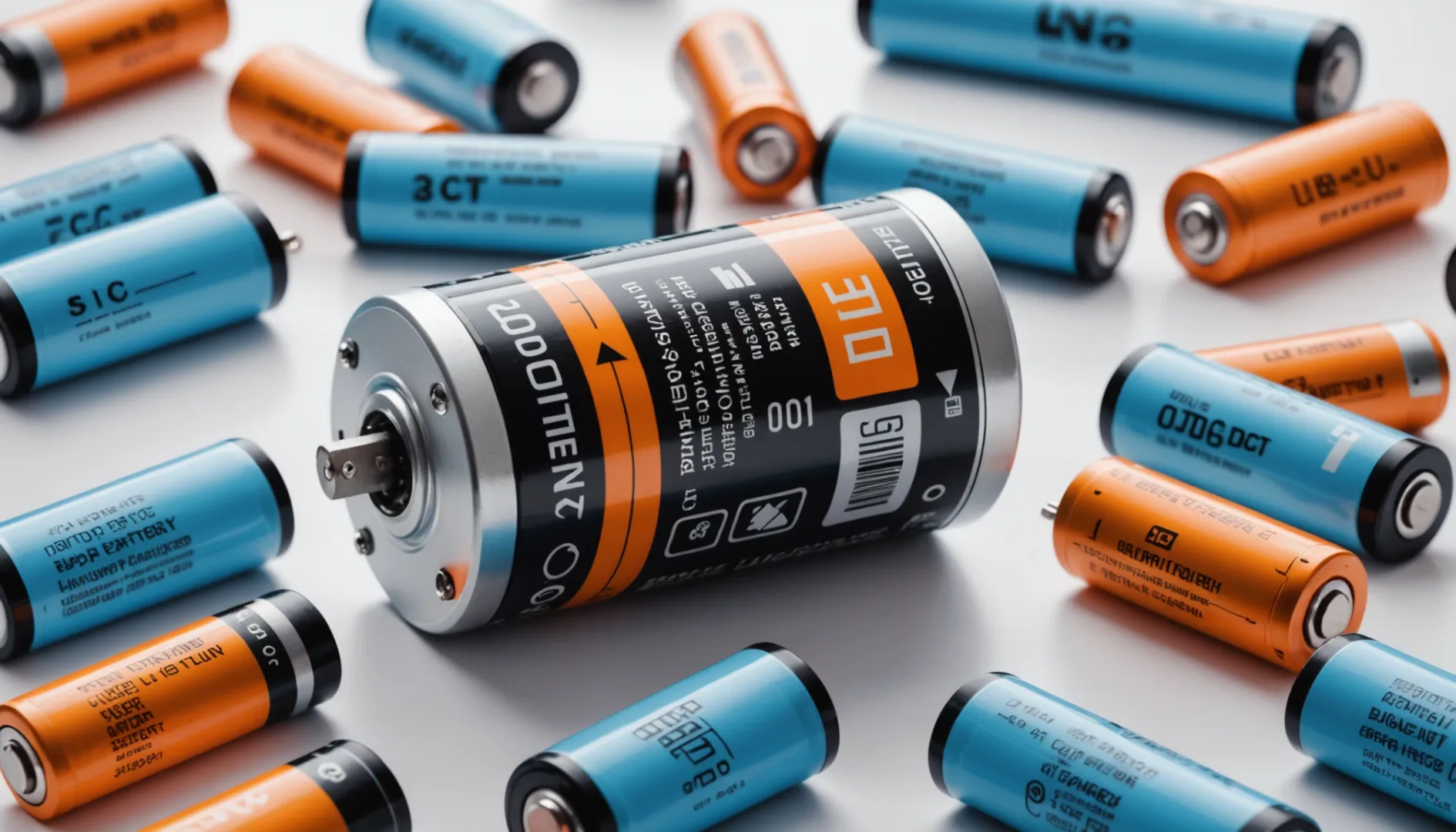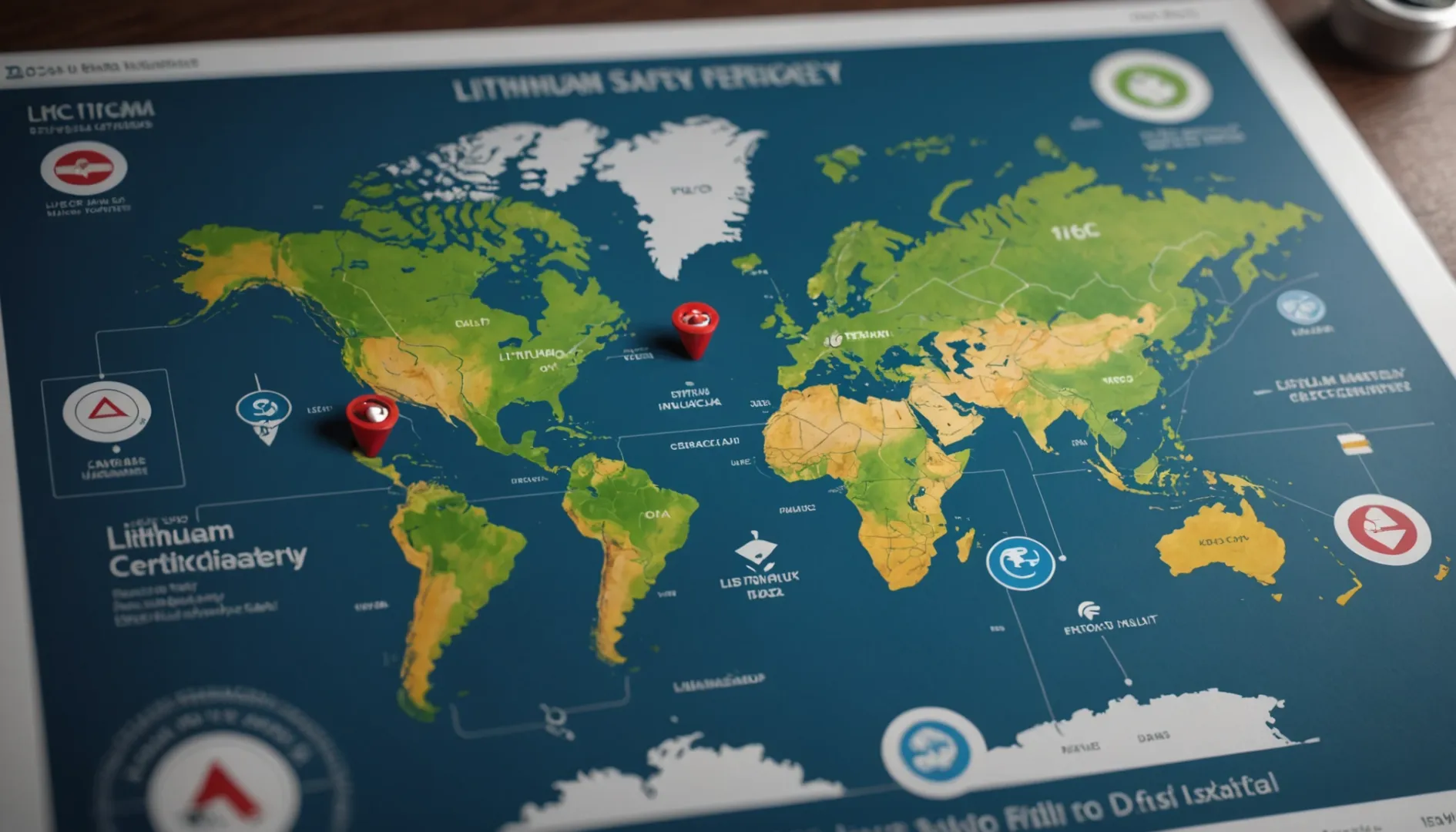Ever wondered about the secrets behind the safety of our favorite gadgets? Lithium batteries are the powerhouses, but ensuring their safety involves more than meets the eye.
When it comes to lithium batteries, key safety certifications include UN/DOT 38.3 for safe transportation, UL standards for lithium cells, IEC 62133 for portable devices, and ANSI standards for rechargeable and primary cells. These ensure comprehensive safety across electrical, mechanical, and thermal aspects, as well as during transportation.
I remember when I first delved into the world of lithium battery safety. The sheer number of certifications was overwhelming. Each one is like a puzzle piece contributing to the overall safety and reliability of these batteries. Understanding these standards isn't just about compliance—it's about ensuring that the products we create or use are safe and dependable.
For instance, UL standards felt like a deep dive into a pool of technicalities. It reminded me of learning to swim—you start with small steps, and before you know it, you're confident in the deep end. These standards are crucial because they guarantee that batteries won't just burst into flames unexpectedly.
The IEC 62133, on the other hand, seemed like the passport to international markets. It’s not just about ticking off boxes; it’s about opening doors to new opportunities by ensuring the batteries are safe for use globally.
Navigating through these certifications can feel like learning a new language. But once you get the hang of it, you realize it's not just about safety—it's about building trust with everyone who uses these batteries. So, as daunting as it might seem at first, understanding these certifications is an investment in peace of mind.
UL 1642 is for testing lithium-ion cells only.False
UL 1642 tests both lithium metal and lithium-ion cells.
IATA certification is necessary for shipping lithium batteries.True
IATA ensures safety compliance for transporting lithium batteries.
Why is UN/DOT 38.3 Testing Essential?
Ever wondered how those lithium batteries in your gadgets stay safe during shipping? Let's dive into the world of UN/DOT 38.3 testing.
UN/DOT 38.3 testing is vital for the safe transport of lithium batteries, involving eight tests that mimic shipping conditions like temperature changes and impacts. These tests prevent accidents, ensure regulatory compliance, and open up global market opportunities.
Understanding UN/DOT 38.3 Testing
When I first heard about UN/DOT 38.3 testing, I was intrigued by its critical role in ensuring the safe journey of lithium batteries from manufacturers to consumers worldwide. It's not just about ticking boxes; it's about real-world safety. The testing process, involving eight stringent tests, reassures us that these batteries can handle anything that comes their way—whether it's a sudden drop in temperature1 or a jarring bump during transit.
These tests include:
- Altitude Simulation
- Thermal Test
- Vibration
- Shock
- External Short Circuit
- Impact or Crush
- Overcharge
- Forced Discharge
Each test serves a purpose, mimicking potential hazards and ensuring batteries won't cause harm during their travels.
The Role in Regulatory Compliance
As a manufacturer or shipper, I know that gaining UN/DOT 38.3 certification isn't just a bureaucratic hurdle; it's a vital step towards meeting international safety standards2. Without this certification, shipping lithium batteries across borders can become a nightmare of delays and fines—or worse, being shut out of crucial markets entirely.
Enhancing Safety and Market Access
I've always believed that safety comes first, and this testing reinforces that belief. By proving batteries can withstand various stresses, manufacturers mitigate the risk of incidents like fires3 or explosions during transit. Moreover, this certification opens doors to international markets where such stringent safety requirements are mandatory.
Supporting Technological Advancements
In an era where electric vehicles and portable electronics dominate our lives, reliable lithium batteries are more important than ever. UN/DOT 38.3 testing supports this technological surge by ensuring new battery technologies can safely reach their destinations without incident. It's not just about compliance; it's about driving innovation safely forward.
Through these tests, manufacturers demonstrate their commitment to safety and reliability, fostering trust among consumers like you and me, as well as regulatory bodies worldwide.
UN/DOT 38.3 covers thermal performance testing.True
UN/DOT 38.3 includes tests for transportation safety, including thermal hazards.
IATA certification is not required for shipping lithium batteries.False
IATA certification is necessary for employees responsible for shipping lithium batteries.
How Do UL Standards Ensure Lithium Battery Safety?
Remember the first time you marveled at your phone’s battery life? That’s all thanks to UL standards.
UL standards ensure lithium battery safety by meticulously testing their performance and resilience against risks such as overheating and short-circuiting.
Understanding UL Standards for Lithium Batteries
Ever wondered what makes the tech we rely on every day so safe? I did too, especially when thinking about the batteries powering my gadgets. UL (Underwriters Laboratories) is at the forefront, setting standards like UL 16424, UL 20545, and UL 2580, which cater to various battery types. Take UL 1642, for example—it tests individual lithium cells for risks like overheating and short-circuiting. It’s reassuring to know that these standards are there to make sure everything from our phones to electric cars is safe for us to use.
The Role of Comprehensive Testing
Imagine a world where batteries are just thrown into products without any testing—scary, right? That’s where UL standards come in. They put batteries through their paces with rigorous testing. UL 2054 is particularly focused on portable batteries, subjecting them to real-world scenarios like drops or temperature extremes. This kind of testing is crucial because it identifies potential hazards before these batteries ever make it to our devices.
Impact on Electric Vehicle Safety
With electric vehicles (EVs) becoming more popular, I found myself curious about how their batteries stay safe. UL 2580 is the answer. It ensures EV batteries are up to snuff in terms of safety and performance, covering aspects like energy capacity and thermal stability. It’s comforting to know that these standards are enhancing safety while boosting our confidence in driving electric.
Comparison with Other Safety Standards
UL standards are part of a bigger picture that includes international guidelines like IEC 62133. Manufacturers often need to meet several standards to sell their products globally. This ensures lithium batteries remain reliable, no matter where they’re used. The integration of UL with other certifications is a key factor in maintaining battery safety6 on an international scale.
UL 1642 is for testing lithium-ion batteries.False
UL 1642 is for testing lithium cells, not specifically lithium-ion.
IATA certification is needed for shipping lithium batteries.True
IATA certification ensures safe transportation of lithium batteries.
Why Are IEC Standards Critical for Portable Battery Applications?
Imagine a world where portable batteries were unpredictable, with risks lurking at every charge. That's where IEC standards step in, creating a safer landscape for both manufacturers and consumers.
IEC standards are vital for portable battery applications because they establish safety protocols that ensure devices operate safely and meet global regulatory requirements. By preventing issues like thermal runaway, these standards enhance product reliability and consumer safety.
Understanding IEC Standards for Batteries
When I first dove into the world of battery manufacturing, I was overwhelmed by the sheer number of guidelines and standards. It felt like being handed an enormous rulebook and told to make sense of it all. But the more I learned about the International Electrotechnical Commission7 (IEC), the more I appreciated their role in creating a universal language for safety and reliability in electronics.
Take IEC 62133, for instance. This standard became my go-to reference when tackling the safety concerns surrounding portable sealed secondary cells and batteries. It was like having a map to navigate potential hazards such as overcharging or overheating. Whenever I faced a problem, I knew this standard had preemptively addressed it, offering solutions to prevent catastrophic failures like thermal runaway.
TOWO Power Is a leader for solar product solution company from China
The Role of IEC Standards in Market Access
My journey into international markets taught me another crucial lesson: compliance with IEC standards is not just about safety—it's about opportunity. I remember the first time I saw our product enter a new market seamlessly because we met these stringent requirements. It was a proud moment, knowing our adherence to IEC certifications opened doors worldwide.
This kind of compliance doesn't just facilitate market entry; it builds trust. Consumers today are savvier than ever, and they demand assurance that their devices are safe. By adhering to these standards, I realized our company wasn't just selling products—we were selling peace of mind.
Benefits of IEC Standards in Product Development
As I became more involved in product development, the value of IEC standards became even clearer. Early on, I learned the hard way how costly redesigns could be when safety considerations were overlooked. Integrating these standards from the start saved us from such pitfalls, streamlining our process and ensuring our designs were sound from inception.
By following IEC guidelines, we not only met customer expectations but exceeded them. Our products didn’t just work well; they were also safe, aligning with what customers wanted. This attention to detail reduced our liability and showed that we prioritized safety as much as innovation.
Understanding the intricacies of standards like IEC 621338 has empowered me to design devices that are not only cutting-edge but also reliable. In a world where demand for portable electronics is ever-growing, having this knowledge is invaluable—it’s the backbone of safe battery application.
IEC 62133 is only for lithium-ion batteries.False
IEC 62133 covers safety for all portable sealed secondary cells, not just lithium-ion.
UN/DOT 38.3 tests focus on transportation hazards.True
The UN/DOT 38.3 tests are designed to ensure battery safety during transport.
How Do Regional Certifications Impact Global Market Access?
Ever felt like you're navigating an intricate maze when it comes to international market access? That's precisely how dealing with regional certifications can feel.
Regional certifications, like Japan's DENAN and Taiwan's BSMI, are key to accessing local markets and ensuring product compliance. They help companies meet specific safety and quality standards, facilitating smoother entry into global markets by building trust and reducing trade barriers.
TOWO Power Is a leader for solar product solution company from China
Understanding Regional Certification Requirements
I remember the first time I encountered the world of regional certifications. It was like being handed a complex puzzle without knowing what the final picture should look like. Each certification, from Japan's DENAN to Taiwan's BSMI9, sets its own unique safety and quality benchmarks. For instance, Japan's DENAN ordinance made me jump through hoops to meet electrical safety norms, while Taiwan's BSMI standards demanded a deep dive into mechanical safety. But once I cracked the code, these certifications became a framework for ensuring my products were both safe and reliable for local consumers.
The Role of Certifications in Market Access
Getting those regional stamps of approval can feel like securing golden tickets to new markets. I've seen firsthand how products that meet these local standards are embraced with open arms by both consumers and regulatory bodies, easing the entry process10. This acceptance is essential for making a splash in new territories. By aligning with regional standards, I've been able to showcase my commitment to quality and safety, which not only builds reputation but also sharpens competitiveness.
Bridging the Gap to Global Markets
While each certification might initially seem like just a local hurdle, they often align with broader international standards set by organizations like the IEC or UL. This alignment turned out to be a godsend for me, simplifying the process of obtaining global certifications. Products that already ticked the boxes in one region often required minimal tweaks to meet international criteria. The CB Scheme Certification11 is a prime example—it harmonizes national standards, paving smoother paths into international markets.
Challenges in Managing Multiple Certifications
Yet, the journey isn't always smooth. Juggling multiple regional certifications can sometimes feel like I'm spinning plates. Each one demands careful navigation through diverse regulatory landscapes, each with its own set of rules. Staying updated on ever-changing certification standards and maintaining compliance can be a full-time job. But I've found that leveraging technology and tapping into expert knowledge can streamline this process, helping me keep my compliance game strong across multiple regions.
In conclusion, understanding the ripple effects of regional certifications is crucial for anyone looking to stretch their wings globally. By meeting local standards, not only do we unlock doors to new markets, but we also elevate our product's credibility and competitiveness on an international scale.
UN/DOT 38.3 covers lithium battery transportation safety.True
UN/DOT 38.3 involves tests for transportation hazards of lithium batteries.
UL 2054 is for electric vehicle battery testing.False
UL 2054 is for portable primary and secondary batteries, not EVs.
TOWO Power Is a leader for solar product solution company from China
Conclusion
Lithium battery safety relies on key certifications like UN/DOT 38.3, UL standards, IEC 62133, and regional certifications to ensure safe transportation, performance, and compliance across global markets.
-
Explore how temperature variations affect battery safety during transport. ↩
-
Learn why compliance is crucial for international shipping regulations. ↩
-
Understand how testing prevents transport-related battery incidents. ↩
-
Explore detailed tests ensuring lithium cell safety. ↩
-
Learn about safety measures for portable batteries. ↩
-
Understand how different standards ensure battery safety globally. ↩
-
Explore how IEC develops global safety standards for electronics. ↩
-
Learn about IEC 62133's guidelines for safe battery operations. ↩
-
Explore Taiwan's BSMI standards to understand regional compliance requirements. ↩
-
Learn how certifications streamline entry into new markets effectively. ↩
-
Discover how the CB Scheme aids in aligning global certification efforts. ↩


